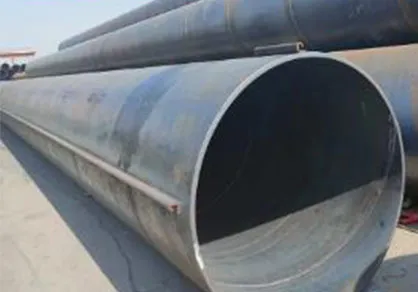-
Cangzhou Yulong Steel Co., Ltd.
-
Phone:
+86 13303177267 -
Email:
admin@ylsteelfittings.com
- English
- Arabic
- Italian
- Spanish
- Portuguese
- German
- kazakh
- Persian
- Greek
- French
- Russian
- Polish
- Thai
- Indonesian
- Vietnamese
- Zulu
- Korean
- Uzbek
- Hindi
- Serbian
- Malay
- Ukrainian
- Gujarati
- Haitian Creole
- hausa
- hawaiian
- Hebrew
- Miao
- Hungarian
- Icelandic
- igbo
- irish
- Japanese
- Javanese
- Kannada
- Khmer
- Rwandese
- Afrikaans
- Albanian
- Amharic
- Armenian
- Azerbaijani
- Basque
- Belarusian
- Bengali
- Bosnian
- Bulgarian
- Catalan
- Cebuano
- China
- China (Taiwan)
- Corsican
- Croatian
- Czech
- Danish
- Esperanto
- Estonian
- Finnish
- Frisian
- Galician
- Georgian
- Kurdish
- Kyrgyz
- Lao
- Latin
- Latvian
- Lithuanian
- Luxembourgish
- Macedonian
- Malgashi
- Malayalam
- Maltese
- Maori
- Marathi
- Mongolian
- Myanmar
- Nepali
- Norwegian
- Norwegian
- Occitan
- Pashto
- Dutch
- Punjabi
- Romanian
- Samoan
- Scottish Gaelic
- Sesotho
- Shona
- Sindhi
- Sinhala
- Slovak
- Slovenian
- Somali
- Sundanese
- Swahili
- Swedish
- Tagalog
- Tajik
- Tamil
- Tatar
- Telugu
- Turkish
- Turkmen
- Urdu
- Uighur
- Welsh
- Bantu
- Yiddish
- Yoruba

снеж . 04, 2024 16:01 Back to list
Different Types of Flanges Illustrated with Images for Easy Understanding
Types of Flanges with Pictures
Flanges are vital components in piping systems, providing a means of joining equipment, such as pipes and valves, to create a secure and leak-proof connection. They come in various shapes, sizes, and materials, each designed for specific purposes in industrial applications. Understanding the different types of flanges can significantly enhance system reliability and efficiency. This article explores some common types of flanges, providing a brief description of each along with their typical uses.
1. Weld Neck Flanges
Weld neck flanges are characterized by a long neck that provides a gradual transition from the flange to the pipe. This design allows for high stress transfer and is ideal for high-pressure applications. The neck also helps in aligning the flange during welding, ensuring a strong bond. Weld neck flanges are commonly used in pipelines that carry gas, oil, or chemicals.
*Picture A weld neck flange showing its tapered neck closely fitted to the pipe.*
2. Slip-On Flanges
Slip-on flanges are designed to slip over the pipe and are then welded both inside and outside to ensure a secure fit. They are easy to install and are often used in low-pressure applications. However, their susceptibility to disconnection under high pressure makes them less suitable for critical applications.
*Picture A slip-on flange installed on a pipe, with visible welding around its circumference.*
3. Blind Flanges
Blind flanges are solid flanges with no central hole. They are used to close off the ends of pipes, valves, or fittings and are essential in maintenance and inspection settings. Blind flanges can withstand high pressure, making them suitable for various applications in industries like oil and gas.
*Picture A blind flange mounted at the end of a pipe, sealing it completely.*
Socket weld flanges are used for small-diameter pipes and feature a socket for the pipe to be inserted. The flange is then welded around the joint. This type of flange is primarily used in high-pressure applications and facilitates easy installation and maintenance.
types of flanges with pictures

*Picture A socket weld flange showing the pipe inserted into the socket.*
5. Lap Joint Flanges
Lap joint flanges are designed to be used with a stub end. They have a circular face that allows the flange to be rotated during installation. This type is ideal for applications requiring frequent cleaning, as it can be easily disassembled. They are commonly found in food and pharmaceutical industries.
*Picture A lap joint flange paired with a stub end, highlighting its adjustable nature.*
6. Threaded Flanges
Threaded flanges have internal threads that match the external threads of the pipe. These flanges allow for easy installation without the need for welding, making them perfect for applications where welding is impractical. However, they are not suitable for high-pressure systems due to the potential for leaks.
*Picture A threaded flange showing its internal threads, fitted onto a pipe with external threads.*
7. Orifice Flanges
Orifice flanges are specialized flanges used for flow measurement applications. They feature holes that allow for the insertion of an orifice plate, which helps in calculating the flow rate of liquids or gases. These flanges are commonly used in metering applications within a pipeline system.
*Picture An orifice flange illustrating the integrated orifice plate.*
Conclusion
Flanges are crucial components of piping systems, serving various functions across different industries. From high-pressure to low-pressure applications, each type of flange is designed with specific characteristics that make it ideal for particular uses. Recognizing the right type of flange for a specific project can enhance safety, efficiency, and performance in industrial operations. Understanding and selecting the appropriate flange type, backed by quality materials and expert installation, can lead to robust piping systems that operate effectively under varying conditions.
Latest news
-
ANSI 150P SS304 SO FLANGE
NewsFeb.14,2025
-
ASTM A333GR6 STEEL PIPE
NewsJan.20,2025
-
ANSI B16.5 WELDING NECK FLANGE
NewsJan.15,2026
-
ANSI B16.5 SLIP-ON FLANGE
NewsApr.19,2024
-
SABS 1123 FLANGE
NewsJan.15,2025
-
DIN86044 PLATE FLANGE
NewsApr.19,2024
-
DIN2527 BLIND FLANGE
NewsApr.12,2024
-
JIS B2311 Butt-Welding Fittings LR/SR 45°/90° /180°Seamless/Weld
NewsApr.23,2024











